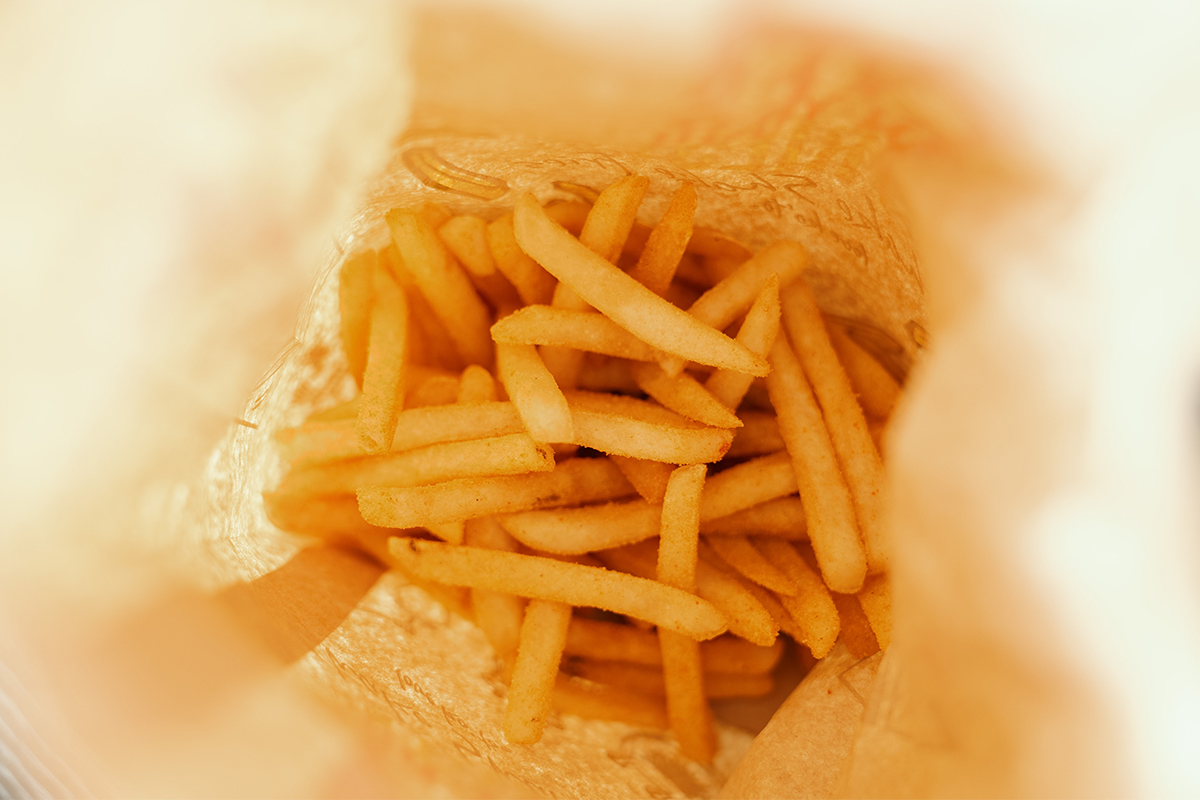According to a new study, adults who suffer from chronic migraines should consider eliminating fried foods from their diet, as reported by The New York Times. It’s a compelling link, considering 35 million Americans — most of them between the ages of 35 and 45 — suffer from the debilitating headaches, while an estimated 25-36% of North American adults consume fast food (which is often fried) every day.
Foods like French fries, potato chips and fried chicken fall under the “omega-6 fatty acids” umbrella, as they’re generally deep-fried in vegetable oil. Omega-6 fats aren’t all bad for you (they’re found in eggs, peanut butter and tofu), but Americans get way too much of them, and usually in their unhealthiest form. Plus, this dietary choice often comes at the expense of omega-3 fats — most prevalent in avocados, fish and spinach — which have displayed of range of benefits, from slowing down plaque development in arteries to boosting cognitive function.
Researchers commissioned by the National Institutes of Health built their study around finding the ideal omega-6 to omega-3 ratio. Historically, people who suffer from chronic headaches are forced to rely on “common-sense cures,” like getting enough sleep, avoiding triggers and limiting stress. (As if it’s that easy.) Meanwhile, migraine medication has a range of unhelpful side effects, like fatigue, weight gain and nausea. Their query was simple: Could optimizing one’s intake of fatty acids potentially help in the battle against migraines?
The answer is yes. Analyzing data from three volunteer groups over 16 weeks, the scientists discovered that those who prioritized eating omega-3 fats, while limiting omega-6 fats, could expect four fewer “headache days” per month. It’s a pretty astonishing finding, considering that migraine sufferers can spend multiple days after their episode in recovery. It could amount to over 50 days a year of relief. And even when these volunteers did experience headaches, the logs reported a 30-40% reduction in the length of each episode.
On the surface, this isn’t that surprising — think about how you feel after a salmon salad compared to a plate of chicken tenders and fries. Even folks who don’t suffer from migraines feel an acute need to lie down after eating crappy food. But scientifically speaking, it appears that moving towards an omega-3-forward diet encourages the production of oxylipins in the blood, a compound that is known to relieve pain. It’s one reason why this research is just the tip of the iceberg. If diet can positively impact a pain-based condition like migraines, could it perhaps resolve … back pain?
There’s no reason not to try it out for yourself. Even if your bodily pain won’t go away after making the switch, you can still expect improvements in blood markers, more energy for exercise, and a trimmer waistline when it’s all said and done. As the The New York Times suggests: “[Aim for] fatty fishes like sardines, anchovies, mackerel, salmon, albacore tuna and trout.” Pair it all with greens, fruits, nuts and whole grains. You don’t need to ban French fries for life, but the fact remains: subbing them out will let you live a longer one.
Whether you’re looking to get into shape, or just get out of a funk, The Charge has got you covered. Sign up for our new wellness newsletter today.
